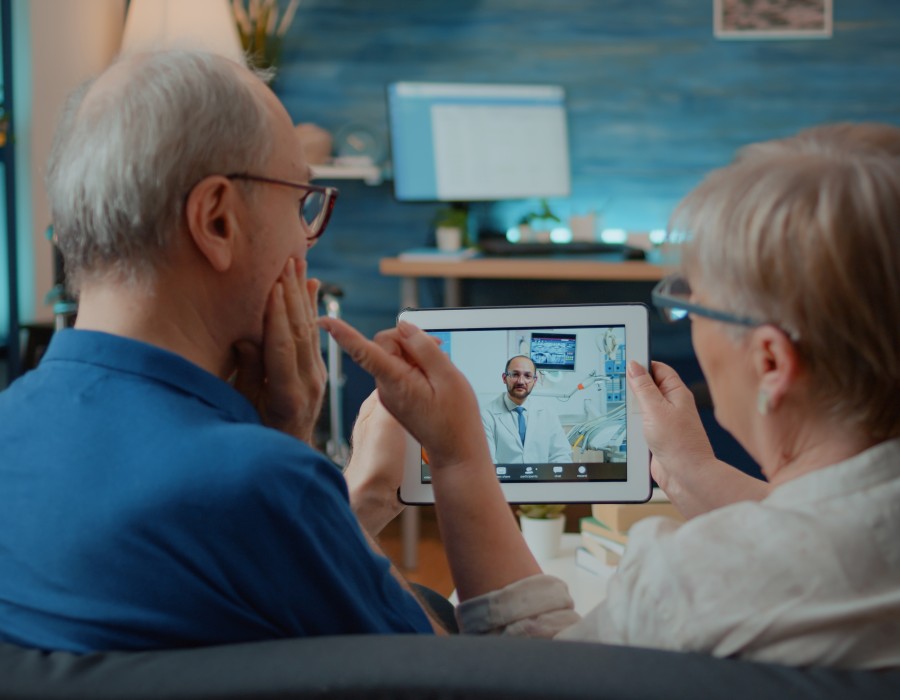Healthcare is changing to focus more on the patient and using connected technology. Remote Patient Monitoring Software (RPM) is one of the biggest changes in this new approach. More healthcare providers are using telehealth tools and digital RPM systems to keep track of patients' health in real time, get instant alerts, and communicate securely without needing in-person visits.
Understanding Remote Patient Monitoring Software
Remote Patient Monitoring Software lets healthcare workers watch patients' vital signs from outside regular clinic settings. It uses devices like wearable sensors, blood pressure monitors, smart thermometers, and glucose meters that are connected to the internet. These devices gather health data and send it safely to medical staff.
Some systems also come with a mobile app for tracking vitals, a platform for sharing data securely, and the ability to connect with electronic health records so doctors have full and accurate patient information.
Key Features of Real Time RPM Software
Track Patient Vitals in Real Time
This software records important health measurements like heart rate, oxygen levels, blood pressure, and temperature.
It helps healthcare providers react quickly when something is wrong.
Secure Data Sharing and Privacy Compliance
Modern RPM systems ensure data is shared safely and follows rules like HIPAA.
This keeps patient information protected while making it available to the right healthcare professionals.
Real Time Alerts for Patient Health
RPM software sends automatic alerts to healthcare teams when a patient's condition changes suddenly, so they can act quickly.
Mobile App for Monitoring Vitals
An RPM mobile app allows patients to track their own health metrics, monitor progress over time, and communicate with healthcare professionals directly, improving patient engagement.
Applications of Digital Health RPM Systems
Chronic Disease Management – Monitoring conditions like diabetes, high blood pressure, and heart disease continuously.
Post Surgical Recovery – Checking on how a patient is healing without needing frequent trips to the hospital.
Elderly Care – Providing constant health monitoring for older adults, giving their families peace of mind.
Maternity and Infant Care – Watching over vital signs during pregnancy and after childbirth.
Technical Capabilities of RPM Platforms
Advanced digital health RPM systems integrate cloud based infrastructure, AI driven analytics, and IoT medical devices. Many also feature predictive health insights, vitals tracking software, and seamless connectivity with electronic health records to support accurate and efficient healthcare delivery.
Selecting the Right RPM Solution
When picking an RPM system, healthcare organizations should look at several important factors:
Data Security – Making sure that all data is sent securely and meets the rules for handling medical information.
Scalability – The system should be able to handle more patients as the need grows.
Ease of Use – The interface should be easy for both healthcare workers and patients to use.
Integration – The system should work well with other healthcare tools and telehealth services.
For instance, companies like Ayelite provide tailored remote patient monitoring solutions that include secure data sharing, real-time alerts, and mobile health tracking features to fit the unique needs of different healthcare settings.
Final Thoughts
Remote Patient Monitoring Software is changing the way healthcare works by making it more proactive, based on data, and centered around the patient.
Features like tracking vital signs in real time, sharing health data securely, and getting instant health alerts help connect patients with their care providers. Whether used with telehealth services or on its own, RPM improves patient care, makes healthcare more efficient, and raises the quality of care at home. Organizations that use these tools are better ready for the future of healthcare that is connected and smart.





Comments